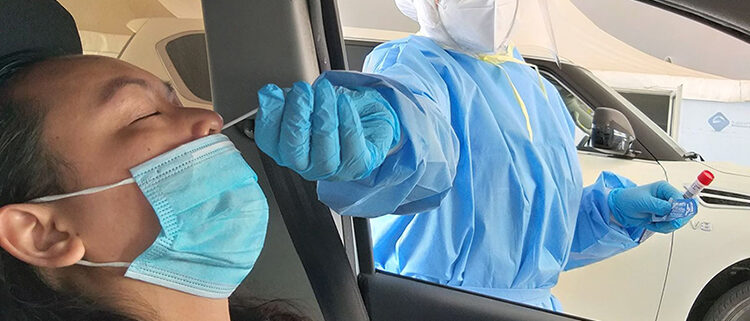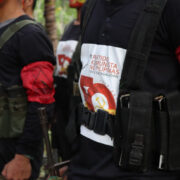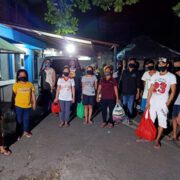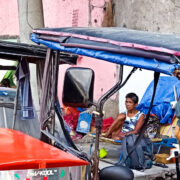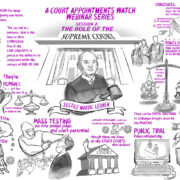COVID19: Being ‘negative’ is the new positive
By Jenny Padua
ABU DHABI, United Arab Emirates—I had myself COVID-19 screened last May 19.
Before that, I downloaded an app to book a session at a government-approved coronavirus testing center. The test was in compliance with the local government’s order to be tested before going back to normal work mode after Abu Dhabi’s lockdown. My Emirati boss asked all of his employees to take the test.
The test I took was classified as a screening test, as I and my colleagues did not have COVID-19 symptoms: fever, headache, body pain, sore throat. We are also under 50 years of age, not pregnant, without pre-existing conditions, not having disabilities, and have not been in contact with a suspected COVID-19 patient.
Laborers and other blue-collar job workers are given free tests here. Companies are also encouraged to pay for tests on their white collar workers such as myself. Otherwise, it costs UAE Dirham 370, as was in my case. Those who have the means may go to hospitals where they pay as much as 700 Dirham that includes going through a triage and a doctor’s appointment.
The point is, getting tested here is easy and, in fact, mandatory. Unlike in the Philippines.
Drive –thru test
The one where I went to at Zayed Sports City is a drive-through testing center, constructed and patterned after the South Korean centers. From the main gate, security guards direct vehicles towards several gates. I was assigned to Gate 19.
Before reaching the gates, medical staff in protective suits approach each car and conduct initial assessment by asking for confirmation of schedule and bar code for easy check and payment mode (company-sponsored or self-pay). Yes, we were in our cars all the time, minimizing contact and helping contain whatever virus we have in us.
At the main testing center, security guards ask for verification if one isn’t alone in the car and who will be taking the test. (I asked a friend to accompany me.) As I queued, I thought this part of the experience is similar to driving through for burgers and fries. All the while, friendly crews assist in inserting IDs on machines for identification. Once confirmed, an attendant signaled me to an assigned slot and asked me to turn the engine off. We then waited for a nurse to conduct the swab test.

What was it like?
I prepared for this test physically and psychologically. Beforehand, I asked some friends who have already taken the test how it had been for them. I received mixed responses. Some said it was indeed painful, some said it would at least be uncomfortable, while some said it had been painless. I also watched videos of how it is done. Many of the videos had subjects appearing uncomfortable or in pain.
One physical preparation I did was thoroughly cleaning my nostrils, of course.
When the nurse came, I asked if it was ok to take photos during the swabbing, thinking it would be nice to share them to our families back home eager to know how it goes as well. It was ok, she said.
I was still sitting on the driver’s seat and my window was open. I was asked to adjust my seat and tilt my head backward. By this time, I was a bit nervous as you can imagine. When I saw the swab at the end of a long stick coming near my left nostril, I closed my eyes.
I felt a tingling and ticklish sensation as the swab was slowly inserted way down my nasal passage. After a few seconds, the nurse said we are done and then I can go. He added the result wuld be sent via SMS within 24 to 48 hours.
I didn’t feel any pain at all, unlike my niece in Australia who experienced severe pain and headache after taking the test. An elderly friend in South Africa also suffered headache for hours after.
I guess one’s reaction to the test depends on one’s tolerance for such things. If one is sensitive or have nasal conditions or allergies, it may indeed be uncomfortable. Perhaps, I may have also been simply lucky for having a nurse who was careful and had a deft touch.

The result
Medical test results that are not immediately known have the habit of making one nervous. I was confident I would be tested negative. At least that was what I was telling myself after the test.
This confidence was brought about by the fact that Abu Dhabi locked itself down early, while the number of cases had not been bad. It went as far as refusing entry to visitors who have already landed at the airport, keeping them there for days until everything was prepared or were flown back home. (The lockdown at the airport here was not as bad as those currently being suffered by returning overseas Filipino workers at Manila International Airport who complain of feeling “discarded” by the Philippine government.)
During the lockdown, I stayed home. I did not violate the quarantine policies of the local government, not having any reason to. This is another reason why Abu Dhabi’s lockdown seems bound to succeed.
Still, I worried a bit. I did all sorts of things to keep myself from thinking about the result. I watched movies on my gadgets. I cleaned house. I prayed.
After 24 hours, I received the awaited SMS that told me I was NEGATIVE of the dreaded virus. Relief and gratitude were my immediate reactions, followed by messages to family and friends who also waited for the outcome.
I told a friend that this is an instance when you hope for something negative rather than something positive. I also realized this pandemic is making the entire world hope for a negative as humanity’s new positive.
To test or not to test?
I think everyone must be COVID-19 screened as a matter of right. This becomes more urgent in my situation as an expatriate in a country where many nationalities mix and co-exist. Abu Dhabi, as an employer of workers from all over the world, is also an air-travel hub between Europe, Africa and the rest of Asia. It also becomes an absolute necessity as the world is emerging from imposed lockdowns and trying to restart the global economy.
This virus is new and it appears it can infect and affect anyone. Everyone must be tested at least once every wave this virus has. I also think testing must be free for the poor.
This thought brings me grief as I read reports that virus testing in the Philippines is severely limited. While some powerful people, such as politicians, have already been tested several times, the throng of workers told to report back to work on Monday, June 1, seem to have very little hope of being tested.
Sana ALL. #

